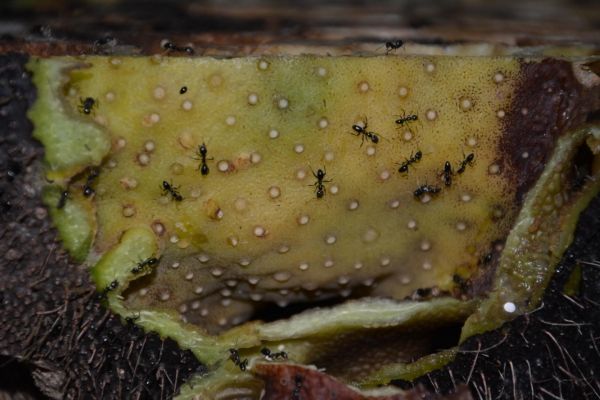Humans began cultivating crops about 12,000 years ago. Ants have been at it rather longer. Leafcutter ants, the best-known insect farmers, belong to a lineage of insects that have been running fungus farms based on chopped-up vegetable matter for over 50 million years. The ant farming of flowering plants, however, started more recently, about 3 million years ago in the Fiji Islands.
Research, led by Dr Guillaume Chomicki from the Department of Plant Sciences, University of Oxford, has demonstrated that millions of years of ant agriculture has remodelled plant physiology. Farming ants deposit nitrogen-rich faeces directly inside plants, which has led to the evolution of these ultra-absorptive plant structures. This means that ant-derived nutrients are actively targeted on the hyper-absorptive sites, rather than deposited as a result of by-products. This new understanding may offer important clues in our fight for food security.
Dr Chomicki, the lead author of the study, says: ‘The speed at which plants can take up nitrogen is a key limitation to plant growth rate. Most plants, including our crops, take up nitrogen from the soil and are thus not naturally exposed to very high nitrogen concentrations. Here, for millions of years, ants have deposited nitrogen-rich faeces directly inside the plants.’ Ongoing work aims to decipher the genetic basis of the ultra-absorptive plant structures discovered in this study, which may ultimately be transferred to our crops and thereby increase their nitrogen uptake rate.
Read more at University of Oxford
Image: Domatium sections showing the warts, the hyper-absorbtive structures, that evolved in farmed ant-plants on which ants defecate. (Credit: University of Oxford)


